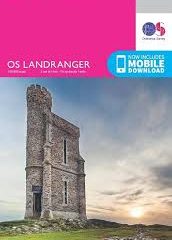Exploring the Wonders of Magdalena Bay

Introduction
Magdalena Bay, a stunning coastal region located in the Baja California Sur state of Mexico, is becoming increasingly notable for its rich biodiversity, ecological importance, and cultural heritage. This area is not only a feast for the eyes with its picturesque landscapes but also a vital habitat for various marine species, making it an important site for environmental conservation and tourism. As climate change and unsustainable practices continue to threaten marine ecosystems globally, the positioning of Magdalena Bay as a sanctuary for wildlife places it at the forefront of conservation efforts.
Main Body
Magdalena Bay is recognized as a crucial breeding ground for gray whales, which migrate annually from Alaska to warmer Pacific waters. Every year, from January to April, thousands of tourists flock to the bay to witness these magnificent creatures up close during their mating and calving season. Local tour operators have offered whale-watching excursions, allowing visitors to experience live interactions while emphasizing the need for responsible tourism that protects these vulnerable marine mammals.
In addition to gray whales, Magdalena Bay hosts a variety of marine life, including sea turtles, dolphins, and numerous fish species, making it a prime location for fishing and diving activities. The unique topography of the bay, with its protective lagoons and estuaries, further enhances its ecological value, providing habitat for migratory birds—a vital component of the local ecosystem. Conservation organizations have been working diligently to monitor these species and promote sustainable practices that safeguard the bay’s health.
The region isn’t just about marine life; it also has a rich cultural history. The indigenous people of the area, including the Cochimí and the Pericú, have lived along the Baja Californian coast for centuries and have deep ties to the land and sea. Sustainable tourism initiatives aim to celebrate and involve local cultures, providing visitors with insights into traditions and practices while supporting community livelihoods.
Conclusion
As awareness around environmental conservation grows, places like Magdalena Bay serve as beacons of ecological importance and sustainable growth. By prioritizing the preservation of its natural resources and cultural heritage, both local authorities and tourists can enjoy the enchanting beauty of the bay while ensuring its protection for future generations. Looking ahead, continued efforts to promote sustainable tourism and marine conservation will be crucial in maintaining the ecological integrity of this unique coastal haven. For readers seeking a meaningful travel experience intertwined with nature and culture, Magdalena Bay offers an exceptional opportunity to explore and appreciate the wonders of our planet.









